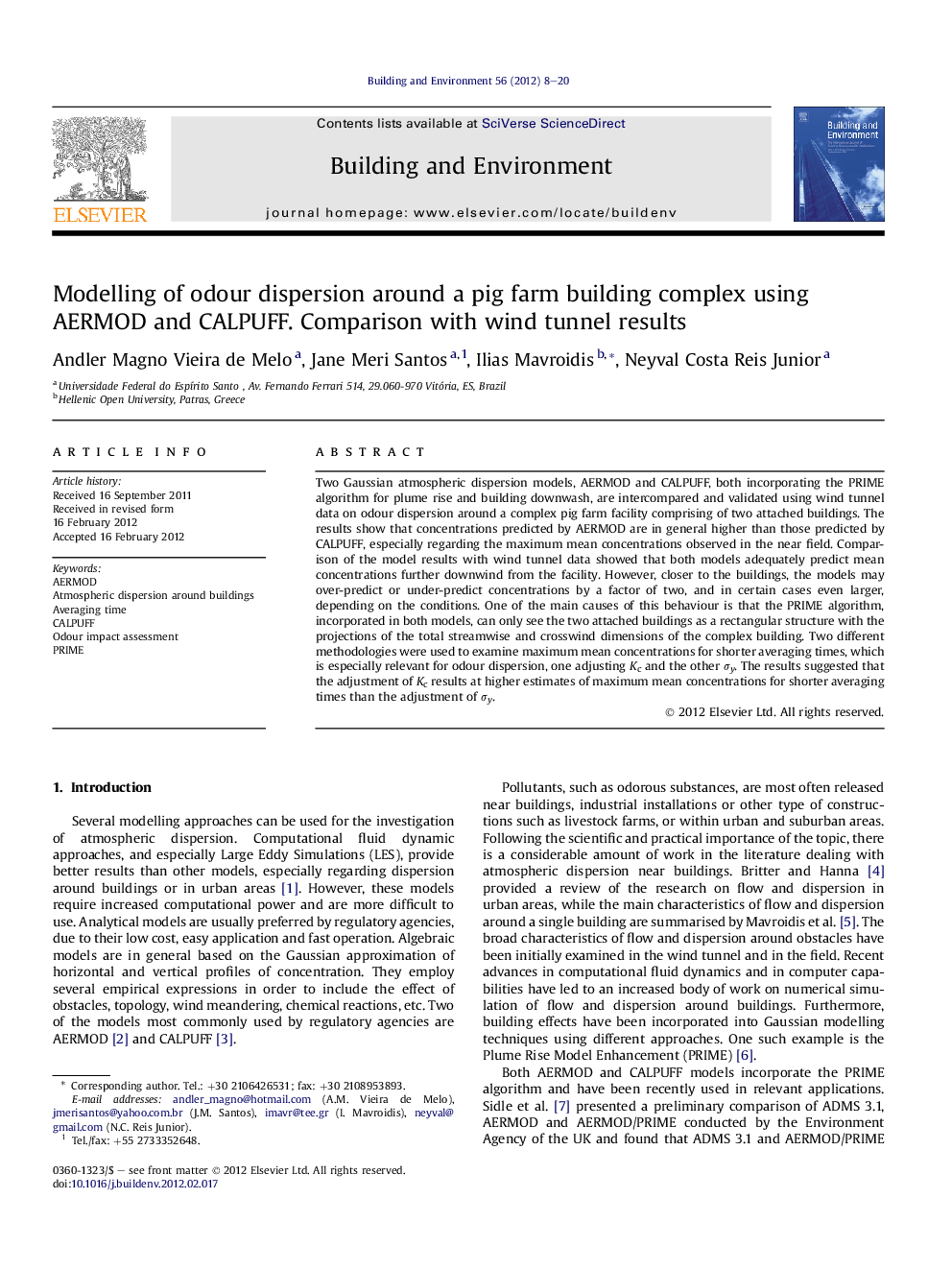| Article ID | Journal | Published Year | Pages | File Type |
|---|---|---|---|---|
| 248438 | Building and Environment | 2012 | 13 Pages |
Two Gaussian atmospheric dispersion models, AERMOD and CALPUFF, both incorporating the PRIME algorithm for plume rise and building downwash, are intercompared and validated using wind tunnel data on odour dispersion around a complex pig farm facility comprising of two attached buildings. The results show that concentrations predicted by AERMOD are in general higher than those predicted by CALPUFF, especially regarding the maximum mean concentrations observed in the near field. Comparison of the model results with wind tunnel data showed that both models adequately predict mean concentrations further downwind from the facility. However, closer to the buildings, the models may over-predict or under-predict concentrations by a factor of two, and in certain cases even larger, depending on the conditions. One of the main causes of this behaviour is that the PRIME algorithm, incorporated in both models, can only see the two attached buildings as a rectangular structure with the projections of the total streamwise and crosswind dimensions of the complex building. Two different methodologies were used to examine maximum mean concentrations for shorter averaging times, which is especially relevant for odour dispersion, one adjusting Kc and the other σy. The results suggested that the adjustment of Kc results at higher estimates of maximum mean concentrations for shorter averaging times than the adjustment of σy.
► AERMOD and CALPUFF are validated and intercompared using a complex building. ► AERMOD in general predicts higher concentrations than CALPUFF. ► The PRIME algorithm cannot see complex structures as such. ► Peak concentrations are calculated using two methodologies (adjusting Kc or σy). ► Adjusting Kc results at higher concentration estimates for shorter averaging times.
